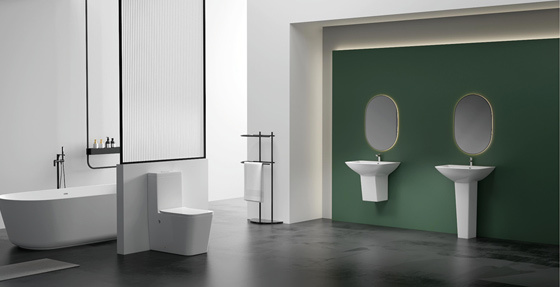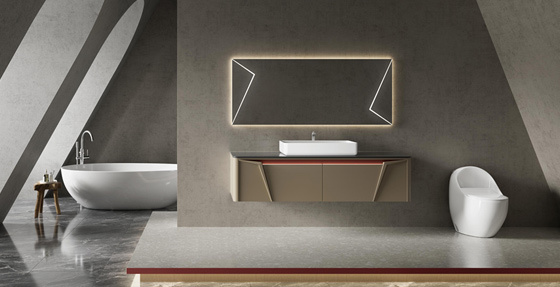DIY Tips for Installing a Rectangular Basin Like a Pro
Release time:
2025-04-20
DIY Tips for Installing a Rectangular Basin Like a Pro Installing a rectangular basin can significantly elevate the aesthetics and functionality of your bathroom. With the right tools, materials, and techniques, you can achieve a professional-looking installation that not only enhances your space but also increases its value. This guide provides a comprehensive, step-by-step approach to installing

DIY Tips for Installing a Rectangular Basin Like a Pro
Installing a rectangular basin can significantly elevate the aesthetics and functionality of your bathroom. With the right tools, materials, and techniques, you can achieve a professional-looking installation that not only enhances your space but also increases its value. This guide provides a comprehensive, step-by-step approach to installing a rectangular basin, ensuring that even DIY beginners can follow along with confidence.
Table of Contents
- Understanding Rectangular Basins: Types and Styles
- Preparation: Tools and Materials Needed
- Measuring Your Space: How to Get it Right
- Step-by-Step Installation Process
- Plumbing Considerations: Connecting Your Basin
- Finishing Touches: Sealing and Clean-Up
- Maintenance Tips for Long-Lasting Use
- Frequently Asked Questions
- Conclusion
Understanding Rectangular Basins: Types and Styles
Before diving into the installation process, it’s essential to choose the right rectangular basin for your bathroom. There are several styles and types available, including:
1. Drop-in Basins
Drop-in basins are designed to sit on top of the countertop, providing a sleek and modern look. They are easy to install, making them a popular choice for DIY enthusiasts.
2. Undermount Basins
Undermount basins are installed beneath the countertop, creating a seamless look. This style requires precise measurements and can be a bit more challenging to install compared to drop-in basins.
3. Vessel Basins
Vessel basins are a bold design choice that sits entirely on top of the counter. They come in various shapes and materials, offering a unique focal point for your bathroom.
Preparation: Tools and Materials Needed
Proper preparation is key to a successful installation. Gather the following tools and materials before starting your project:
Essential Tools
- Measuring tape
- Level
- Drill and drill bits
- Socket wrench
- Plumber’s putty
- Screwdriver
- Pipe wrench
- Caulking gun
- Safety goggles and gloves
Materials Needed
- Rectangular basin
- Mounting hardware (if applicable)
- Plumbing fittings and pipes
- Sealant or caulk
- Countertop (if not already installed)
Measuring Your Space: How to Get it Right
Accurate measurements are crucial for ensuring that your rectangular basin fits perfectly in your bathroom. Here’s a step-by-step process for measuring your space:
1. Measure the Existing Space
Use a measuring tape to determine the dimensions of the area where the basin will be installed. Consider the height, width, and depth of the space.
2. Determine the Basin Size
Choose a basin that fits comfortably within the measured space. Ensure there is enough countertop space surrounding the basin for functionality and aesthetics.
3. Check for Plumbing Access
Ensure that the plumbing connections are accessible and that there is sufficient space for any necessary fittings.
Step-by-Step Installation Process
Now that you have your tools, materials, and measurements, it’s time to begin the installation!
1. Prepare the Countertop
If you are installing a drop-in basin, ensure that the countertop is clean and free of debris. For undermount basins, you will need to create an opening in the countertop based on the basin’s dimensions.
2. Install the Basin
- For Drop-in Basins: Place a bead of plumber’s putty around the edge of the basin. Carefully drop the basin into the countertop opening, ensuring it’s centered and level. Secure the basin with the provided mounting hardware.
- For Undermount Basins: Apply a bead of silicone sealant around the edge of the sink cutout. Position the basin and attach it using clips to secure it underneath the countertop.
3. Connect the Plumbing
Once the basin is secured, connect the plumbing. Attach the drain assembly to the basin and connect the supply lines for both hot and cold water. Use a plumber’s wrench to ensure that all connections are tight but avoid over-tightening.
Plumbing Considerations: Connecting Your Basin
Connecting your basin to the plumbing system is a critical step that requires careful attention:
1. Install the Drain Assembly
Follow the manufacturer’s instructions for installing the drain assembly. Ensure that the rubber gasket is securely in place to prevent leaks.
2. Connect Water Supply Lines
Attach the water supply lines to the faucet. Make sure to connect the correct lines to the hot and cold water intakes.
3. Check for Leaks
Before finishing up, turn on the water supply and check for leaks around the drain and supply connections. If you notice any leaks, tighten the connections as necessary.
Finishing Touches: Sealing and Clean-Up
Now that your basin is installed and plumbed, it’s time for the finishing touches.
1. Apply Sealant
Apply a bead of silicone sealant around the edges of the basin to create a watertight seal. Smooth the sealant with your finger for a neat finish.
2. Clean the Area
Wipe down the countertops and surrounding area to remove any dust or debris. Ensure all tools are put away, and the workspace is clean.
Maintenance Tips for Long-Lasting Use
Proper maintenance of your new rectangular basin will ensure its longevity and functionality. Here are some tips:
1. Regular Cleaning
Use a non-abrasive cleaner to wipe down your basin regularly. Avoid harsh chemicals that can damage the finish.
2. Inspect for Leaks
Periodically check the plumbing connections for any signs of leaks. Address any issues promptly to prevent water damage.
3. Tighten Fittings
Over time, plumbing fittings can become loose. Check and tighten them as necessary to maintain a secure installation.
Frequently Asked Questions
1. Can I install a rectangular basin myself?
Yes, with the right tools and following these steps, you can successfully install a rectangular basin as a DIY project.
2. What type of basin is best for a small bathroom?
For small bathrooms, consider a compact drop-in or vessel basin, which can maximize space while providing functionality.
3. How do I know if my basin is level?
Use a level tool to check that the basin is even. Adjust the mounting hardware as necessary to achieve a level installation.
4. What should I do if I notice a leak?
If you detect a leak, first turn off the water supply. Then, check all connections and fittings, tightening them as needed. If the leak persists, consider consulting a professional plumber.
5. How can I prevent mold and mildew around my basin?
Keep the area around your basin dry and well-ventilated. Regularly clean the surfaces and apply sealant to prevent moisture buildup.
Conclusion
Installing a rectangular basin can be a rewarding DIY project that enhances your bathroom’s functionality and appearance. By following this detailed guide, you can achieve a professional-quality installation that not only meets your needs but also adds value to your home. Remember to take your time, double-check your measurements, and ensure all plumbing connections are secure for a successful outcome. Happy renovating!
Related news
Introduction to the selection points of children's toilets
Children's toilets, the whole size and adult toilets are different, the main thing is width and height.
2025-01-09
What is the difference between a split toilet and a split toilet?
The main characteristics of the split toilet are high water level, strong impulse, low price, and many styles.
2025-01-09









